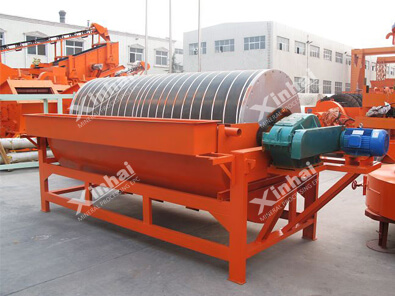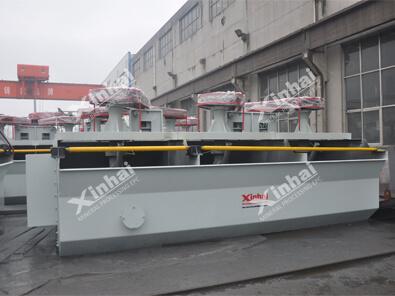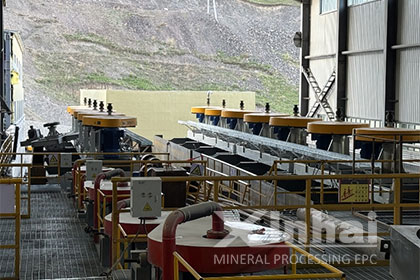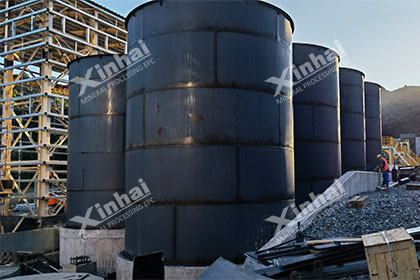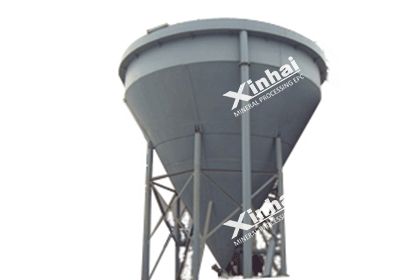How to Extract Quartz Ore?
 Laura
Laura
 Feb 25, 2022
Feb 25, 2022
 2166
2166
If you want to know more details about equipment, solutions, etc, please click the button below for free consultation, or leave your requirements!
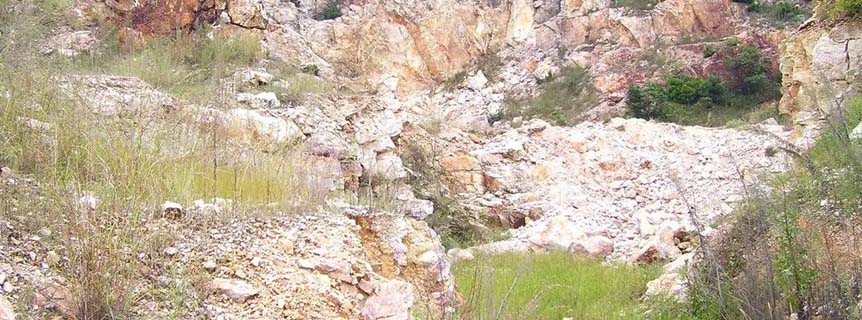
Quartz is the second most abundant ore in the continental crust, second only to feldspar. There are many kinds of quartz, and the colorless and transparent quartz is called crystal. Quartz sand purification refers to a difficult separation technology to remove a small or trace amount of impurities in quartz to obtain refined quartz sand or high-purity quartz. This article mainly introduces how to extract quartz from the following five aspects:
01 Water washing
BackThe grade of SiO2 in water-washed and graded desliming quartz decreases with the fineness of the quartz particle size, while the grades of magazine minerals such as iron and aluminum are just the opposite. This phenomenon is especially obvious in quartz containing a large amount of clay minerals. Therefore, it is very necessary to conduct water separation and grading desliming of quartz raw ore before selection, and the effect is relatively obvious.
For example, the chemical composition of quartz raw ore in a concentrator is: SiO279.38%, Fe2O3 1.68%, AL2O311.28%, and the content of -0.1mm particle size in its particle size composition is 27.65%. After pre-selection washing, grading and desliming, the grade of SiO2 increased to 86.36%, Fe2O3 decreased to 0.49%, and AL2O3 decreased to 6.79%. The effect of impurity removal and purification is relatively significant.
As a pretreatment method before ore selection, water washing and grading desliming have been applied earlier and are common, but the removal effect of thin-film iron and sticky impurity minerals existing on the quartz surface is not yet significant.
02 Scrubing
BackScrub is to remove the thin film iron, bonding and muddy impurity minerals on the surface of quartz sand with the help of mechanical force and abrasive peeling force between sand grains, and further rub the mineral aggregates that are not monomers, and then the quartz sand is further purified by grading.
At present, there are mainly two methods of rod friction cleaning and mechanical scrubbing. For mechanical scrubbing, it is generally believed that the factors affecting the scrubbing effect are mainly from the structural characteristics and configuration of the scrubbing machine, followed by process factors, including scrubbing time and scrubbing concentration.
Research shows that the best effect of sand scrubbing concentration is between 50% and 60%. In principle, the scrubbing time is based on the preliminary product quality requirements. It should not be too long. consumption and increase the cost of beneficiation and purification. For example, the quartz sand above 0.3mm after washing, grading and desliming in a certain place is subjected to rod friction scrubbing. The results show that after grinding and scrubbing, Fe2O3 is reduced from 0.19% to 0.10%, and the iron removal rate reaches 47.4%.
03 Magnetic separation
BackThe use of magnetic separation process can remove weak magnetic impurity minerals such as hematite, limonite and biotite, including conjoined particles, to the greatest extent. Intensive magnetic separation usually adopts wet strong magnetic separator or high gradient magnetic separator.
Generally speaking, for the quartz whose impurities are mainly weak magnetic impurity minerals such as limonite, hematite, biotite, etc., it can be selected by using a wet strong magnetic machine at a temperature of more than 10,000 oersted; For the main strong magnetic minerals, it is better to use a weak magnetic machine or a medium magnetic machine for sorting.
According to the test, the number of magnetic separation and the strength of magnetic field have an important influence on the effect of iron removal. With the increase of the number of magnetic separation, the iron content gradually decreases, and most of the iron can be removed under a certain magnetic field strength, but after that the magnetic field strength even Increase a lot, and the iron removal rate does not change much. In addition, the finer the particle size of the quartz sand, the better the iron removal effect. The reason is that the amount of iron-containing impurity minerals in the fine-grained quartz sand is high.
04 Flotation
BackTaking into account the serious impact of fluorine-containing wastewater on the environment, the fluorine-free and acid-floating method appeared in the 1970s. For example, in the separation of feldspar and quartz in Japan, sulfuric acid or hydrochloric acid (PH=2) is used for slurry mixing, and flotation is successfully achieved by adding advanced aliphatic amine salt and sodium petroleum sulfonate mixed collector. Fluorine-free and acid-free flotation method is a new technology for flotation and separation of quartz feldspar that has been vigorously developed in recent years. The ratio of feldspar is preferentially floated to realize the separation of the two. However, the fluorine-free and acid-free flotation method is not as mature as the HF method and the acid method, and there is no report on the application of industrial production. The isoelectric points of mica and quartz are similar, and the separation is difficult. Or two methods of flotation of anionic-cationic collectors under alkaline conditions can obtain good results. Generally speaking, after scrubbing, desliming, magnetic separation and flotation, the purity of quartz can reach 99.3%-99.9%, which basically meets the needs of industrial sand.
05 Acid leaching
BackAcid leaching utilizes the feature that quartz is insoluble in acid (except HF), and other impurity minerals can be dissolved by acid solution, so that further purification of quartz can be achieved. Acid leaching commonly used acids include sulfuric acid, hydrochloric acid, nitric acid and hydrofluoric acid; reducing agents include sulfurous acid and its salts. The study found that the above acids have good removal effect on non-metallic impurity minerals in quartz, but have a significant effect on different metal impurities, acid types and concentrations. It is generally believed that various dilute acids can remove Fe and Al. All have significant effects, while the removal effect of Ti and Cr is treated by acid leaching with concentrated sulfuric acid, aqua regia or HF. Usually, the mixed acid composed of the above acids is used for acid leaching and removal of impurity minerals.
Considering the dissolution effect of HF on quartz, the concentration of HF generally does not exceed 10%. In addition to the acid concentration, the amount of acid, acid leaching time, temperature and slurry stirring can all affect the effect of quartz acid leaching. The control of various factors of acid leaching should be based on the final grade requirements of quartz, and the concentration, temperature and dosage of acid should be reduced as much as possible, and the acid leaching time should be reduced, so as to achieve quartz purification at a lower cost of beneficiation.
In some European and American countries, due to the strict requirements for iron in quartz, the acid leaching and purification treatment of quartz has been systematically studied, and an acid leaching quartz mineral processing and purification plant has been established. After acid leaching, high-purity quartz with a purity of 99.99% can be obtained.
06 Other purification methods
BackDue to the different requirements of different quartz products for the content of impurity minerals, some other purification methods are sometimes used for further purification. The method can remove the gas and liquid impurities in the quartz and the surface pollution caused by the impurity minerals and metal inclusions in the process, so as to further purify the quartz sand.
07To Wrap up
BackThis article mainly discusses five kinds of quartz sand purification processes, including water washing; scrubbing; magnetic separation; flotation; acid leaching.
Due to the difference in ore particle size and other properties, we need to determine the specific beneficiation process according to the actual situation in the actual beneficiation process.
 +86 183 3575 8886
+86 183 3575 8886 pinklaurabao@gmail.com
pinklaurabao@gmail.com




 Message
Message Chat Now
Chat Now


